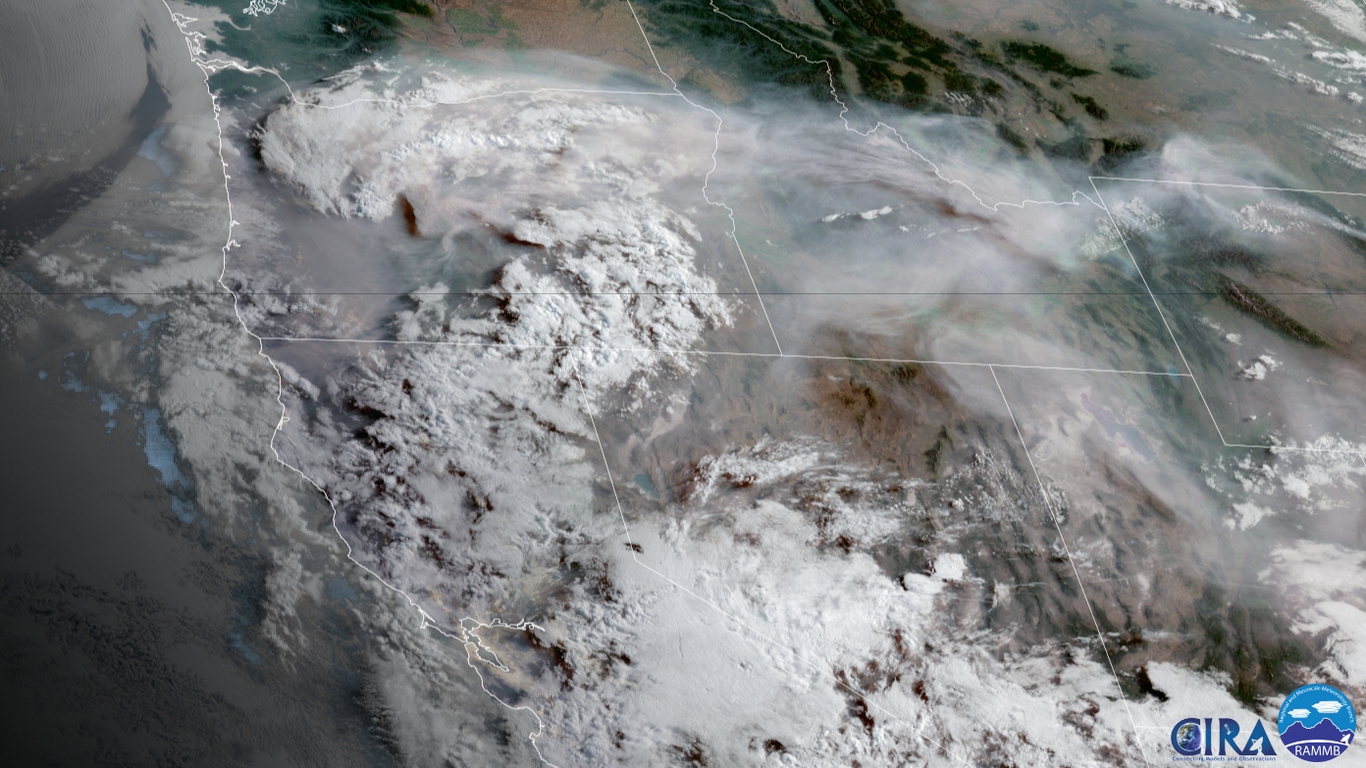A wildfire in far northern California, near the border with Oregon, grew from ignition on Friday afternoon to become the state’s biggest fire so far this year, at more than 51,000 acres by Sunday morning.
The big picture: The McKinney Fire is affecting an area that is experiencing a drought, heat wave and dangerous weather conditions with dry thunderstorms expected to form Sunday. These storms will spark lightning strikes but little rain.
- The blaze, likely sparked by lightning, is threatening the community of Yreka in Siskiyou County, California, which has a population of about 8,000.
- California Gov. Gavin Newsom (D) declared a state of emergency for Siskiyou County, allowing more federal and state resources to be directed toward fighting the flames and helping evacuees.
- Evacuation orders and warnings were issued for parts of the city and surrounding areas as the flames moved closer Saturday night.
The intrigue: On Friday and Saturday nights, the fire formed its own thunderstorms, known as PyroCb clouds, that sent smoke lofting 50,000 feet into the air. These clouds, which most closely resemble a nuclear explosion rather than a fire, are a telltale sign of extreme fire behavior, as flames outraced firefighters’ attempts to contain them.
- The fire has astonished experts who have studied the West’s massive blazes in recent years for its rate of growth and extreme behavior. The weather conditions, plus a lack of previous large, recent fires in that area, gives the blaze abundant fuels to burn.
- Lightning flickered within the smoke plume Saturday night, triggered by the rapidly rising ash, water vapor and other components.
- Sunday morning, smoke had overspread at least four western states, making it as far east as Colorado.
Context: Studies show that climate change is increasing the number of days with extreme fire weather conditions in the West, and is leading to larger wildfires throughout the region as well.
- Nine of California’s top 10 largest wildfires have occurred since 2010.
- One study published last year found that wildfires in the West nearly doubled the area burned between the 1984 to 2000 period when compared to 2001 to 2018.
- It found global warming was likely the driving factor behind this trend, since increasing temperatures are drying out vegetation and leading to more days with extreme fire weather conditions, namely heat, high winds and dry air.
What’s next: The forecast for Sunday calls for “critical” fire danger in the region as dry thunderstorms form. These will produce further lightning strikes and wind shifts but deliver little rain, so they could worsen the fire rather than help squelch it.
- Temperatures will also be a hazard on Sunday, with triple-digit highs expected, along with low relative humidity. Red flag warnings are in effect due to the volatile conditions.
- The McKinney Fire isn’t the only new blaze in the West, either, as new fires have sprung up elsewhere in California and in Idaho and Montana as well.



